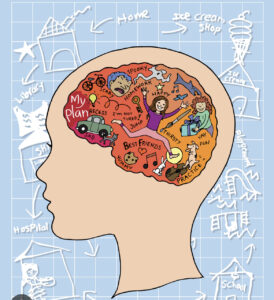 Let’s take a random group of 100 boys, roughly between ages 10 – 14.
Let’s take a random group of 100 boys, roughly between ages 10 – 14.
You know nothing about them, but their moms are asked a simple poll question:
On a scale of 1-10 (with 10 being the most negative) how would you rank your son on his taking initiative, organizing himself, keeping track of assignments, following directions and paying attention?
What would be your guess of the percentage of these boys being rated 7 or higher?
Now, ask the same question of the girls.
(I know. I know. I’m not supposed to generalize, but I will proceed ahead anyway.)
Here’s my guess as to the Selznick Poll results:
Boys: 85% (+/- five percentage points)
Girls: 30% (+/- five percentage points).
Presuming I’m correct within a margin of error, what are the implications of the poll?
Well, I have a parade of beleaguered parents who are doing everything they can (from positive reinforcement to more punitive approaches) to try and get their disorganized and lackadaisical sons more in the game, but nothing seems to move the needle.
When I talk to them about the hypothetical poll, I usually see a moment of recognition that conveys something like, “Ah, I get it. So what you’re telling me his behavior is not that unusual, that maybe he’s not as disordered as I thought – that it’s part of the typical boy makeup, a type of boy immaturity. ”
“Exactly. Right on the money! That’s my message to you. Understanding this can be quite liberating.”
(We will continue this discussion next week.)
Feel free to make comment below. To receive future blog posts, register your email: https://shutdownlearner.com.
To Contact Dr. Richard Selznick for advice, consultation or other information, email – rselznick615@gmail.com.
 Copyright, Richard Selznick, Ph.D. 2023, www.shutdownlearner.com.
Copyright, Richard Selznick, Ph.D. 2023, www.shutdownlearner.com.

 Those of you following this blog for some time know there are some recurring themes in these posts (that mostly irritate me).
Those of you following this blog for some time know there are some recurring themes in these posts (that mostly irritate me).
 Copyright, Richard Selznick, Ph.D. 2023, www.shutdownlearner.com.
Copyright, Richard Selznick, Ph.D. 2023, www.shutdownlearner.com. Following up on last week’s Selznick Poll discussion on what percentage of boys show signs of “executive function” deficits (click here:
Following up on last week’s Selznick Poll discussion on what percentage of boys show signs of “executive function” deficits (click here: